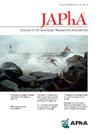Facilitation influence on community pharmacy practice transformation in the ‘Flip the Pharmacy’ program
IF 2.5
4区 医学
Q3 PHARMACOLOGY & PHARMACY
Journal of the American Pharmacists Association
Pub Date : 2025-05-08
DOI:10.1016/j.japh.2025.102416
引用次数: 0
Abstract
Background
The Flip the Pharmacy (FtP) program utilized hands-on facilitation to help Community Pharmacy Enhanced Services Network-participating community pharmacies transform their practices. There are limited data on the characteristics of successful facilitation as well as the factors that influence transformation.
Objectives
The objectives of this research were to (1) evaluate practice transformation in a sample of FtP program participating pharmacies, (2) analyze the association between facilitation activities and practice transformation components, and (3) identify factors for successful facilitation.
Methods
A cross-sectional mixed-mode survey was administered to FtP program Cohorts 1 and 2 participating pharmacies (n = 809). The survey consisted of 5 main sections: (1) practice transformation using 5 work components of the Systems Engineering Initiative for Patient Safety (SEIPS) model; (2) questions on the facilitator's strategy, activities, and tools (3) overall practice transformation (4) demographics (5) pharmacy characteristics. Data analysis included descriptive statistics and linear regressions on: (1) perceived overall practice transformation regressed on facilitation strategy, tools, and activities, and (2) within SEIPS components, practice transformation regressed on its correspondent facilitation activity.
Results
Perceived overall practice transformation was positively associated with coaching facilitation strategy (β = 0.365, P < 0.01), facilitation tools (β = 0.37, P < 0.01), and staffing (β = 0.193, P < 0.01). Cohort 1 had a higher perceived overall practice transformation vs. cohort 2. The facilitator's activities and facilitation tools were significant predictors for practice transformation in different work system components: Building capacity activity, Human Resources facilitation activity, Workflow design facilitation activity, Workspace facilitation activity, and IT use facilitation activity, with a standardized betas of (β = 0.33, 0.25, 0.32, 0.31,0.22, P < 0.01) respectively.
Conclusion
The facilitator's coaching strategy and activities positively impacted practice transformation. It was also found that facilitation tools are key components to better engage pharmacists in practice transformation. Finally, the utilization of SEIPS work system components presented a holistic evaluation tool of practice transformation.
“翻转药房”项目对社区药房实践转型的促进作用。
背景:翻转药房(FtP)项目利用实际操作的便利来帮助CPESN®参与的社区药房改变他们的做法。关于成功促进的特征以及影响转变的因素的数据有限。本研究的目的是:(1)评估参与FtP计划的药房的实践转化,(2)分析促进活动与实践转化成分之间的关系,(3)确定成功促进的因素。方法:对FtP项目第1组和第2组参与的药店(n=809)进行横断面混合模式调查。该调查包括五个主要部分:(1)使用患者安全系统工程计划(SEIPS)模型的五个工作组件进行实践转换;(2)关于调解人的策略、活动和工具的问题(3)整体实践转型(4)人口统计学(5)药房特征。数据分析包括描述性统计和线性回归:(1)感知总体实践转化与促进策略、工具和活动相关;(2)在SEIPS组件中,实践转化与相应的促进活动相关。结果:感知整体实践转化与教练促进策略正相关(β =0.365, p)。结论:辅导员的指导策略和活动对实践转化有正向影响。还发现,促进工具是关键组成部分,以更好地参与实践转型药师。最后,对SEIPS工作系统组件的利用提出了一种实践转化的整体评价工具。
本文章由计算机程序翻译,如有差异,请以英文原文为准。
求助全文
约1分钟内获得全文
求助全文
来源期刊
CiteScore
3.30
自引率
14.30%
发文量
336
审稿时长
46 days
期刊介绍:
The Journal of the American Pharmacists Association is the official peer-reviewed journal of the American Pharmacists Association (APhA), providing information on pharmaceutical care, drug therapy, diseases and other health issues, trends in pharmacy practice and therapeutics, informed opinion, and original research. JAPhA publishes original research, reviews, experiences, and opinion articles that link science to contemporary pharmacy practice to improve patient care.

 求助内容:
求助内容: 应助结果提醒方式:
应助结果提醒方式:


